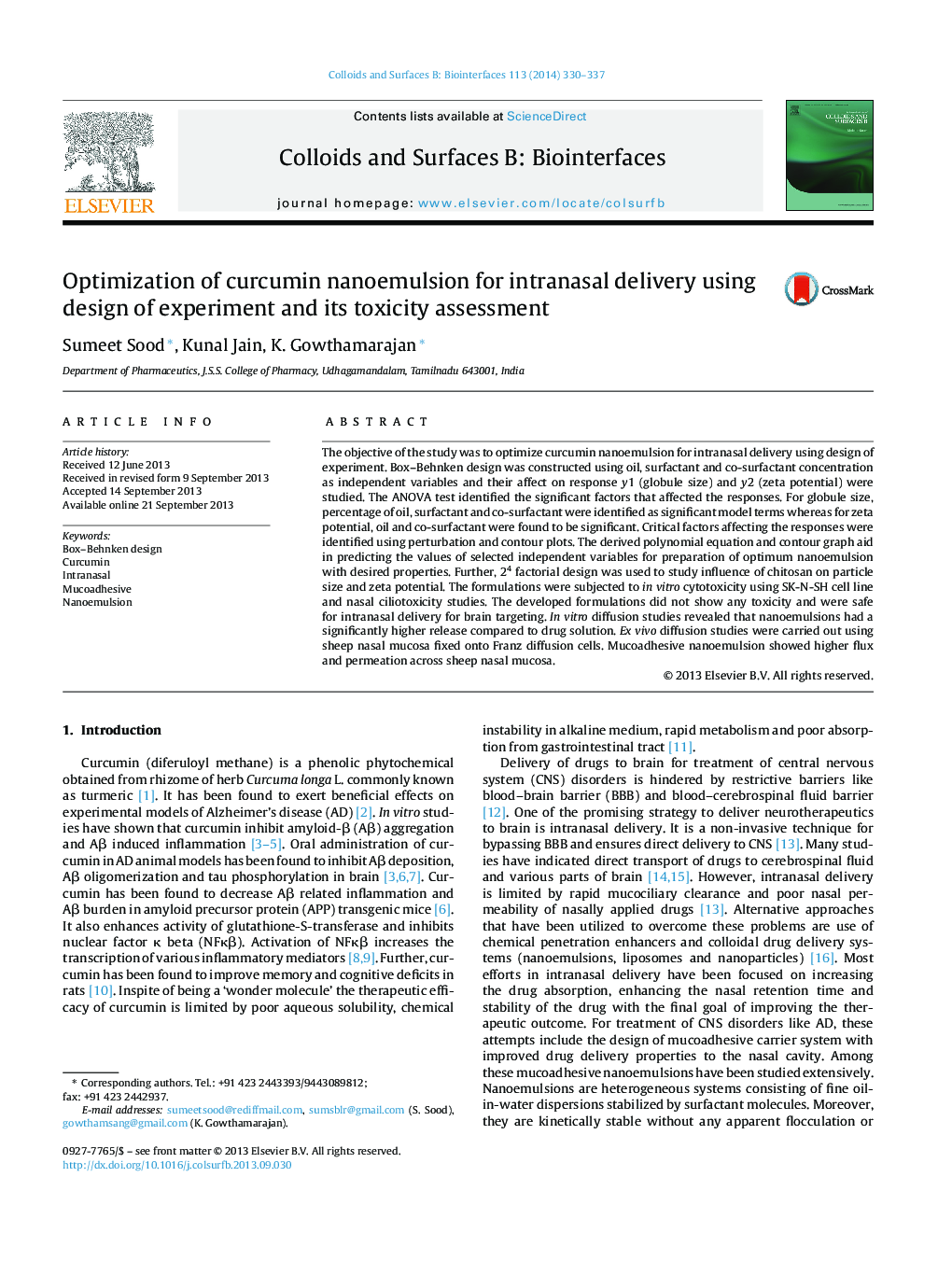| Article ID | Journal | Published Year | Pages | File Type |
|---|---|---|---|---|
| 599997 | Colloids and Surfaces B: Biointerfaces | 2014 | 8 Pages |
•Optimization of curcumin nanoemulsion using Box–Behnken design.•Chitosan as a mucoadhesive agent.•Toxicity assessment using SK-N-SH cell lines and nasal ciliotoxicity.•Higher flux and permeability of optimized formulation across sheep nasal mucosa.
The objective of the study was to optimize curcumin nanoemulsion for intranasal delivery using design of experiment. Box–Behnken design was constructed using oil, surfactant and co-surfactant concentration as independent variables and their affect on response y1 (globule size) and y2 (zeta potential) were studied. The ANOVA test identified the significant factors that affected the responses. For globule size, percentage of oil, surfactant and co-surfactant were identified as significant model terms whereas for zeta potential, oil and co-surfactant were found to be significant. Critical factors affecting the responses were identified using perturbation and contour plots. The derived polynomial equation and contour graph aid in predicting the values of selected independent variables for preparation of optimum nanoemulsion with desired properties. Further, 24 factorial design was used to study influence of chitosan on particle size and zeta potential. The formulations were subjected to in vitro cytotoxicity using SK-N-SH cell line and nasal ciliotoxicity studies. The developed formulations did not show any toxicity and were safe for intranasal delivery for brain targeting. In vitro diffusion studies revealed that nanoemulsions had a significantly higher release compared to drug solution. Ex vivo diffusion studies were carried out using sheep nasal mucosa fixed onto Franz diffusion cells. Mucoadhesive nanoemulsion showed higher flux and permeation across sheep nasal mucosa.
Graphical abstractFigure optionsDownload full-size imageDownload as PowerPoint slide
